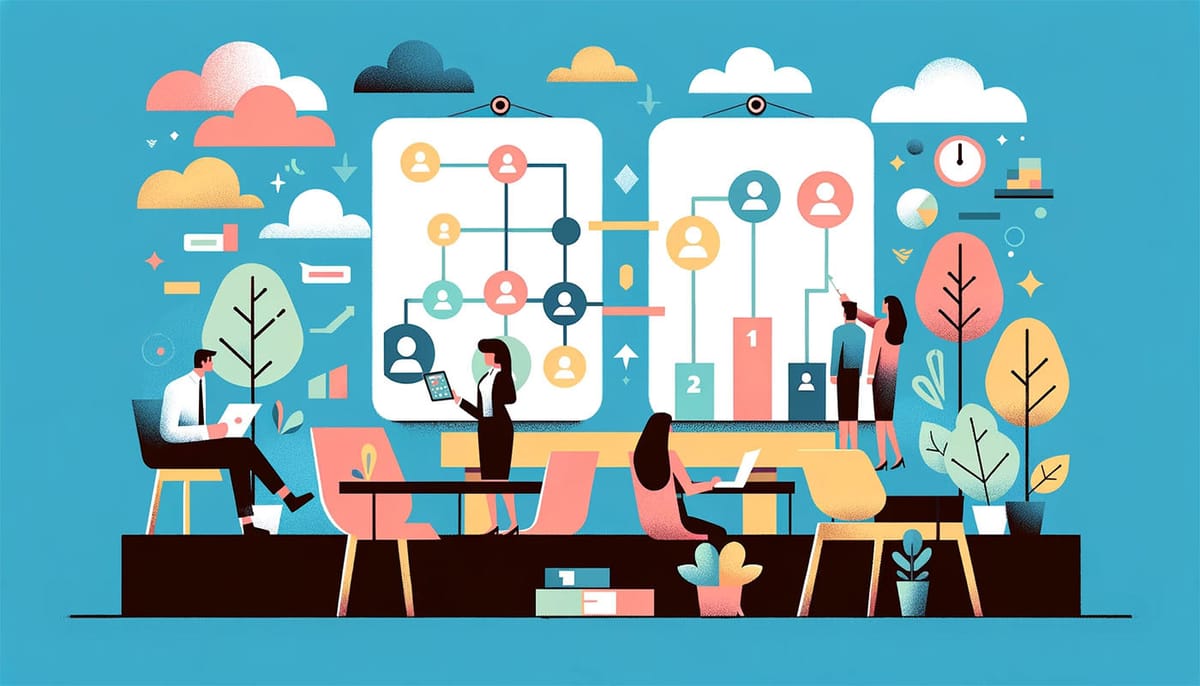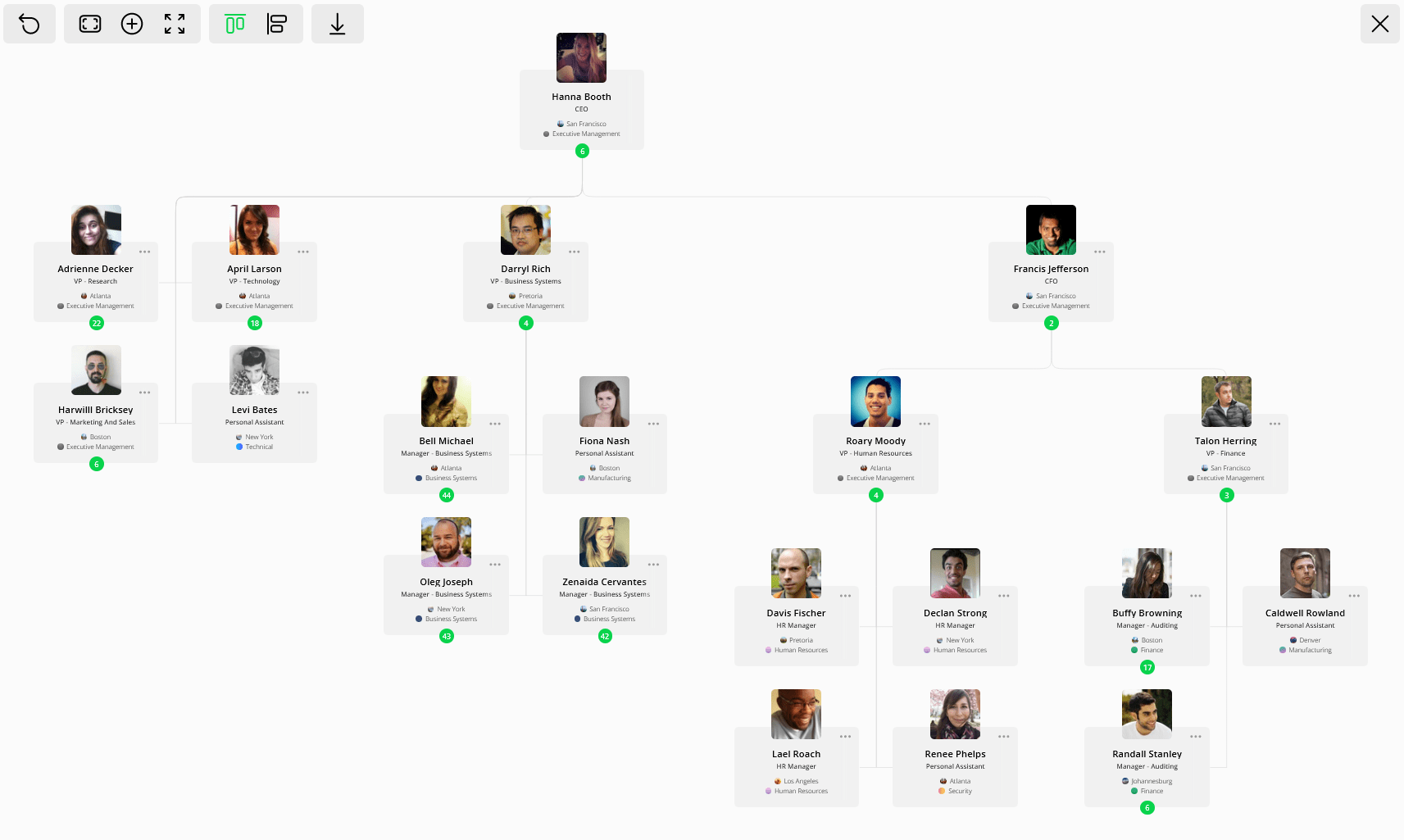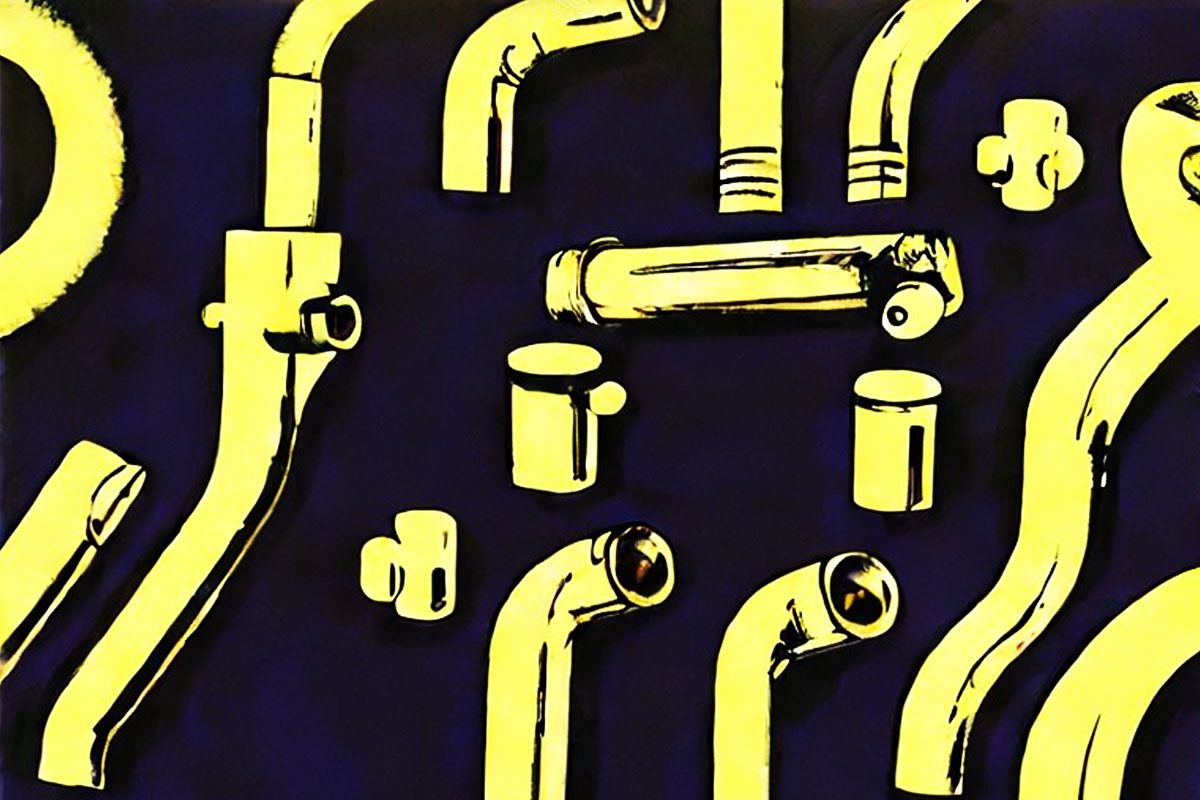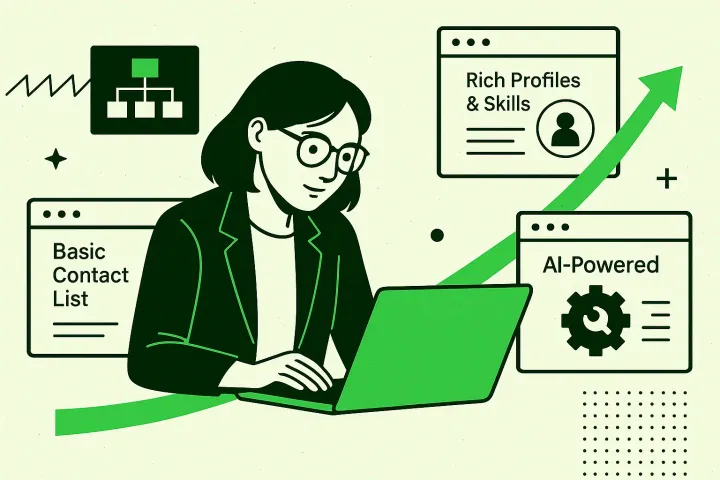3 Simple Ways to Get Employees to Use Your Company Org Chart
If you're looking for a way to get your employees to actually use your org chart, here are 3 simple ways you can help them get value from the tool.

Organizational charts are meant to be helpful tools for employees, but more often than not, employees don't see the value in them and land up never using them.
If you're looking for a way to get your employees to actually use your org chart, here are 3 simple ways you can help them get value from the tool.
1. Make Your Org Chart Easily Accessible
If your org chart tool is buried in a drawer, no one is going to use it. Therefore, making sure your org chart is easily accessible is simple first step to getting your employees to actually use it.
Here are some tips on how to make your org chart easily accessible for your employees.
Put it in the company employee directory
Employee directories are one of the most highly utilized software tools in modern organizations. If your company has an employee directory, this is the perfect place to put your org chart, since your employees will already be familiar with the "people app" and can easily find the related "org chart app" and reference it as needed.

Post it in central locations
Another way to make sure your org chart is easily accessible is to post it in a central location where everyone can access it and see it. A common place to put an org chart is on the company intranet. This can be a link from your intranet navigation, or even a link in the app launcher (if you're using Microsoft 365).
Make it easily searchable
If you're linking to your org chart from the company intranet or elsewhere, make sure it's searchable so that employees can easily find the org chart tool when they need it. One idea is to create a PDF version of the org chart and make that available on your intranet as a simple document download. It definitely doesn't work as well as a live org chart, but it can be a quick win.
Train new hires on where to find your org chart
Make sure you train new employees on where to find the organizational chart when they start at the company. That way, they'll know where to go when they need to reference it and they won't have to ask around or search for it themselves.
2. Keep Your Org Chart Up-To-Date
If your org chart is out of date, no one is going to take the tool seriously. So you need to make sure you keep it updated with changes in personnel and organizational structure.
Here are a few ways on how to keep your org chart from getting dusty.
Assign someone in charge of updating the org chart
This may seem like a no-brainer, but it's important to have one or two people who are responsible for ensuring that your org chart is up-to-date.
Use organizational chart software to keep your org chart up to date automatically
There are a number of different software options out there that can help you keep your org chart up to date without any manual effort on your part. Modern org chart software is an easy way to keep things updated, but it does require an up-front investment of some time and effort.

Constantly review and track changes in your org chart
Even if you're not using software to automatically keep your org chart up to date, you can still make sure it stays relatively current by reviewing it on a regular basis. This will require some manual effort, but it's worth it if you want to avoid having an outdated or inaccurate org chart.
3. Make Your Org Chart Look Good and Easy to Use
An org chart is helpful for businesses who want to ensure that everyone knows who reports to whom. It's also essential for larger enterprises who need to keep track of the thousands of employees and contractors that make up their workforce.
But there's one big problem with org charts: they're often confusing and difficult to understand. Here are some ways to fix this.
Use clear language and effective labeling
One way to make your org chart more user-friendly is to use clear and concise language. This means using terms that people will understand immediately, without having to stop and think about what they mean. For example, instead of referring to "All users" you could use the term "Everyone."
Have clear and distinct reporting lines
Probably the most important aspect of an org chart is its reporting lines. This is the reporting hierarchy (or chain of command) that shows who reports to whom, and it's the basis from which an organizational chart is built.
It's important to have clear and distinct reporting lines so that everyone knows who their direct supervisor is. Plus, easy to understand reporting lines helps prevent confusion and frustration when people are trying to figure out who they should go to with questions or concerns.

Highlight key information
Highlighting the names or titles of key personnel, or highlighting certain elements of your organizational structure, can make a big difference in how easy your org chart is to understand.
For example, if you have a large org chart with many departments, you could have a "highlight by department" option so that people can quickly find the information they're looking for.

Another way to make your org chart look good is to use colors, text styling, and other formatting options. This helps draw the eye to important information and makes it easier to find what you're looking for. Just don't go overboard, because if everything is highlighted, then nothing is highlighted! 😉
Make it easy (and quick) to navigate
You'll want to make sure that your org chart is simple to navigate. This means having a clear structure and an easy-to-use interface so that people can find what they're looking for quickly, without getting frustrated.
Add profile pictures
Profile pictures are a great way to personalize your org chart and make it more visually appealing. Not only that, but it can also help people put a face to a name, which can be helpful when trying to remember who's who.

Learn more about org charts on the OneDirectory Blog







